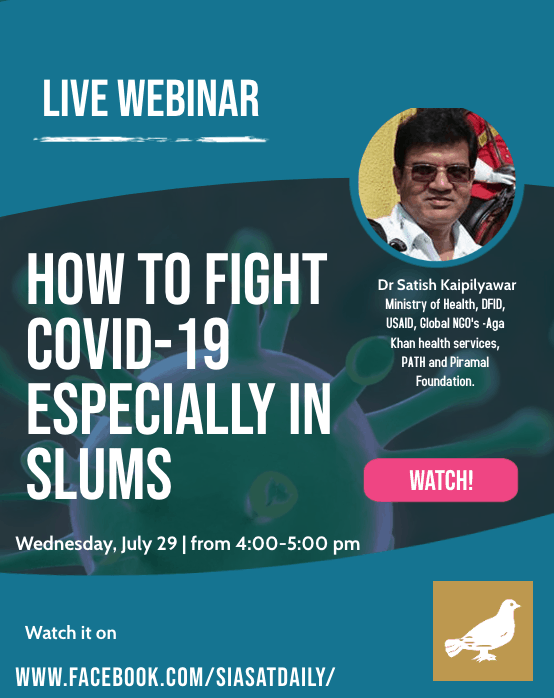New Delhi: Dr Satish Kaipilyawar is a medical Doctor studied at KMC Warangal and Tata Institute of Social sciences, Mumbai. He has worked in various public health programs with the government and international NGOs and has lead large public health programs. Currently is Associate Director at SHARE INDIA and is a practising Public Health professional for the past 32 years.

Satish has also designed and implemented immunization, injection safety, infection control, Tuberculosis, school health, Leprosy and many public health programs in India and is currently responsible for overseeing the Centers for Disease Control (CDC) supported Global Health Security Agenda (GHSA) projects on airborne infection control, latent TB infection, improving use of public health data for designing interventions for ending TB and improving MDRTB outcomes by addressing adverse drug reactions and migration in Mumbai.
Dharvi a massive success
Dharavi—Asia’s largest slum had reported its first positive case on April 1 and by April 30 the cases spread as fast as fire and were declared as a hotspot.
Mission Dharavi was strategized directly under Chief Minister and Municipal corporation of Greater Mumbai (BMC) along with the team of sixty doctors and several other medicos.
Major goals and strategies decided by BMC were:
- 4 ‘T’ approach- Tracing, Tracking, Testing and Treating
- Private-Public partnership from the beginning
- Infrastructure arrangement for institutional quarantine
- Strict enforcement of containment measures-
- Widely publicized and explained to the general public for cooperation.
“The first target was tracing which was all about rapid testing,”
Dr Satish
Ø The BMC conducted house to house screening, 4, 76,775 people were screened by BMC workers, private Doctors screened 47,500 and van facility screened 14, 970 people thus a population of 5, 48,270 were screened.
“One of the major tasks was the 3.6 Lakh high-risk population which included senior citizens, unhealthy individual and people who suffered from other high risk diseases. 8246 senior citizens were screened and separated from other community members,” he added.
The major issues faced by the team were manpower and infrastructure:
Manpower: With all those available the team had done the following
BMC mobilized all private practitioners and trained them
Provided all essential PPE, gloves, Pulse-oxymeters, thermal scanners and supplies
Encouraged to keep open and run clinics and report pos cases
Clinics were sanitized by BMC worker
Infrastructure:
To augment facilities all private hospitals were brought on board and acquired
Maintenance of sanitation and supplies was provided
“Home Quarantine was not feasible in Dharavi as it was very congested,”
Dr Satish
Alternatives of home quarantine were:
Schools, marriage halls and sports complexes roped in for asymptomatic/mild symptomatic.
Provision of community kitchen- breakfast lunch and dinner.
24×7 medical service with medicines and equipment
Strict enforcement measures
Prompt sealing
Provision of uninterrupted supplies & essential services.
Only critical patients were moved outside Dharavi for admission to hospitals and 90 per cent of the patients were managed within Dharavi itself.
Mission Dharavi an example for all
The result of mission Dharavi is right in front of the entire world. Dharavi’s model has set an example for the entire world.
It would be wrong if one says that following Dharavi across the country can soon set India free from Corona.



